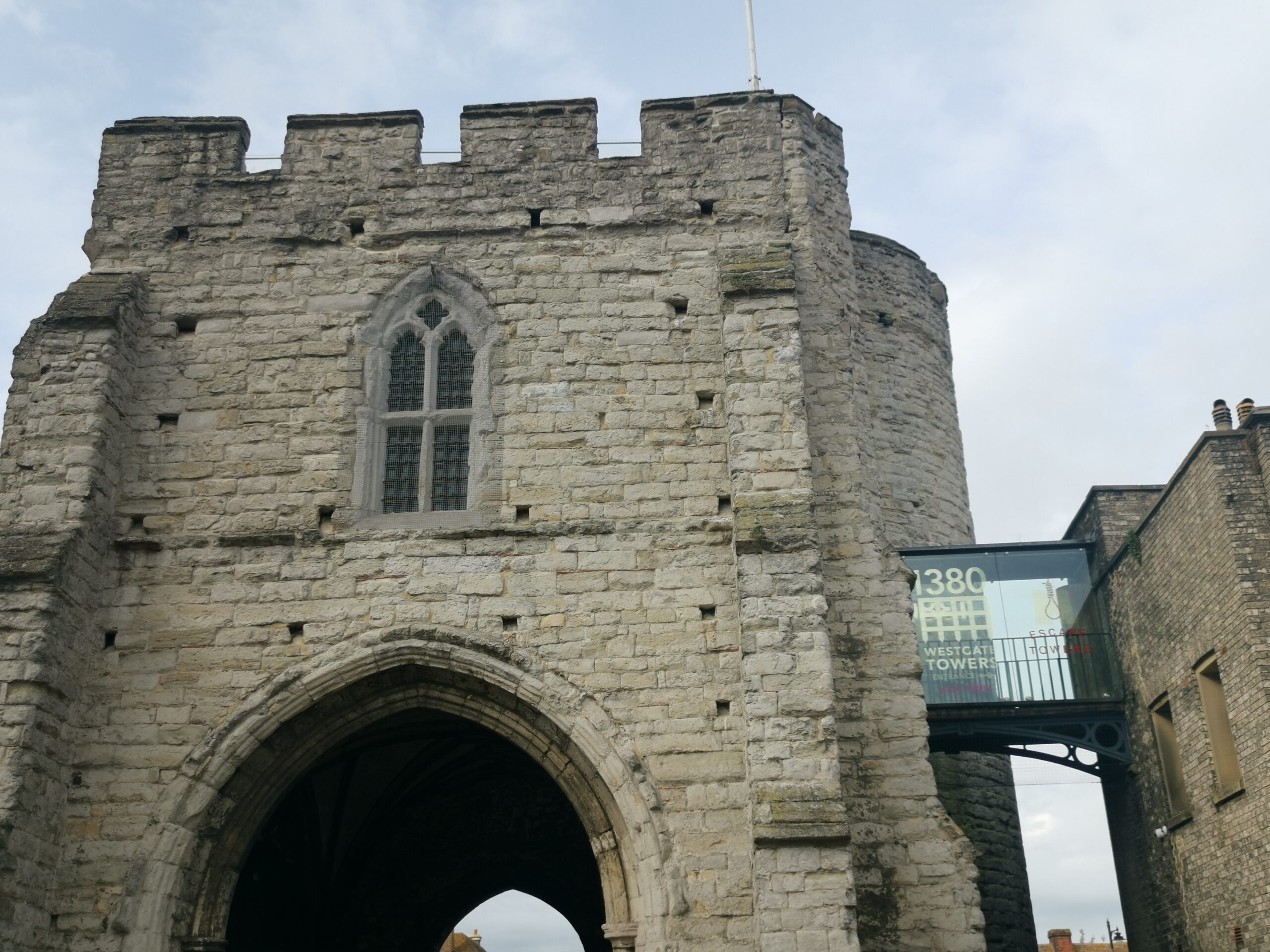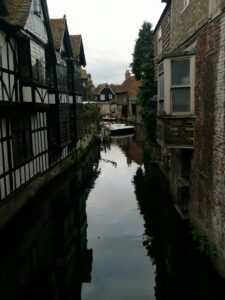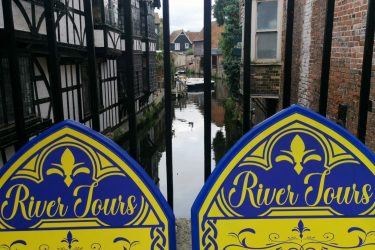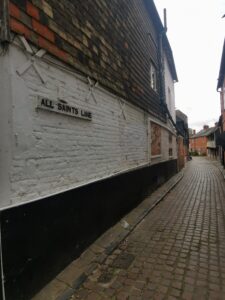Situated in the historic county of Kent in southeast England, Canterbury is a charming city rich in history. It is well known for its beautiful cathedral, charming streets, and extensive, centuries-old history. A sample of what makes Canterbury unique is as follows:
The crown gem of Canterbury is the Cathedral, a UNESCO World Heritage Site. It is among the most illustrious and ancient Christian buildings in England. The cathedral is home to Saint Thomas Becket’s shrine and features magnificent Gothic architecture and an intriguing past.
Historic Sites: Canterbury is full of historic sites, even outside the cathedral. Two further World Heritage Sites that shed light on the early Christian history of the city are St. Martin’s Church and St. Augustine’s Abbey.
Cobblestone streets and half-timbered buildings in Canterbury contribute to the city’s charming ambiance. It is a pleasure to stroll through the lively high street or along the mediaeval city walls.
Cultural Events: The city holds a number of cultural events, such as the Dickens Festival, which honours the city’s relationship with Charles Dickens, and the Canterbury Festival, which includes music, theatre, and art.
Canterbury is a thriving centre of education because it is home to both Canterbury Christ Church University and the University of Kent.
Gateway to Kent: The stunning countryside of Kent, dubbed the “Garden of England,” lies just outside the city and provides chances for outdoor pursuits including hiking and vineyard visits.
Canterbury is a must-see location in England because of its unique combination of natural beauty, history, and culture. Canterbury offers something for everyone, whether your interests are in history, architecture, or just unwinding in a beautiful place.
In this article, we will give you the best things to do and see in Canterbury.
Visit Canterbury Cathedral
The crown jewel of Canterbury, England, is Canterbury Cathedral, one of the most famous religious buildings in the world and a UNESCO World Heritage Site. There is great historical, architectural, and spiritual significance to this magnificent cathedral.
History: St. Augustine founded an abbey on the site in the sixth century, which is when Canterbury Cathedral first came to be. However, the current Gothic building mostly constructed in the eleventh and sixteenth centuries. The Archbishop of Canterbury, the head of the Anglican Church globally, resides there as well as being the mother church of the Anglican Communion.
Architecture: The cathedral’s exterior is a magnificent illustration of English Gothic style. The breath-taking stained glass windows, the stunning Bell Harry Tower, and the amazing fan-vaulted ceiling of the Trinity Chapel are among the notable features.
Thomas Becket: The assassination of Canterbury’s Archbishop, Thomas Becket, in 1170, brought the cathedral to a global level of attention. His shrine developed into a popular destination for pilgrims and is an important part of the cathedral’s past.
Guests: Canterbury Cathedral is open to guests from all around the world these days. It provides a singular chance to delve into its past, be in awe of its architectural magnificence, and find a sense of spiritual peace within its hallowed halls.
For anyone visiting Canterbury’s historic city, a visit to the cathedral is a must-do experience that takes them on a journey through time, architecture, and spirituality.
Visit St. Augustine’s Abbey
Situated in Canterbury, England’s mediaeval city, St. Augustine’s Abbey is an important religious landmark with a key role in English history and the story of Christianity in the British Isles.
Foundation: In the latter part of the sixth century, St. Augustine of Canterbury founded St. Augustine’s Abbey. Pope Gregory the Great dispatched Augustine as a missionary, and he was crucial in converting the Anglo-Saxons to Christianity.
Spiritual Centre: For centuries, the abbey was a place of worship and education. It was essential to the early mediaeval period’s dissemination of Christianity in England and the preservation of knowledge.
Architectural Significance: Despite the abbey’s dissolution during the English Reformation, a sizable number of its original structures—such as the spectacular St. Pancras Church and the abbot’s residence—have survived and continue to stand as poignant reminders of the past.
UNESCO World Heritage Site: St. Augustine’s Abbey, St. Martin’s Church, and Canterbury Cathedral have all been named UNESCO World Heritage Sites because of their exceptional cultural and historical significance.
Travelling back in time to St. Augustine’s Abbey allows you to discover the legacy of English Christianity and see the architectural ruins.
Visit St. Martin’s Church
Located in the centre of Canterbury, St. Martin’s Church is a spiritual and historical treasure with a history that dates back to the sixth century. This church has a special role in English history and a long-standing relationship to the British Isles’ Christian founding.
St. Martin’s Church, one of the oldest and first parish churches in England, was founded by St. Augustine. Early in the sixth century, St. Augustine of Canterbury founded it. Pope Gregory the Great dispatched Augustine as a missionary, and he was instrumental in converting the Anglo-Saxons to Christianity.
Historical Significance: Throughout English history, St. Martin’s Church has been present at several crucial junctures. This is the church where Christian Queen Bertha of Kent greeted Augustine upon his arrival in Kent, and where her husband, King Ethelbert, was baptised, signifying a significant milestone in the Christianization of England.
Architecture: The church’s characteristics, which include Saxon, Norman, and Roman influences, are a reflection of centuries of history. Its UNESCO World Heritage Site classification highlights its historic significance.
By going to St. Martin’s Church, you can go through time on a spiritual and historical trip that immerses you in the origins of Christianity in England.
Nightlife in Canterbury
After dusk, Canterbury, a city famous for its rich history and legacy, becomes a bustling, energetic centre. Its nightlife may not match that of larger cities, but it nonetheless provides a fascinating mix of hip clubs, comfortable pubs, and cultural activities.
Pubs and Bars: There are many classic English pubs in Canterbury. Locations such as The Thomas Ingoldsby and The Foundry Brew Pub serve you regional ales in a cosy, period setting. Visit The Cuban, The Cherry Tree, or The Jolly Sailor for a more modern experience, complete with live music and mixed drinks.
Cultural Evenings: Attending a show at the Marlowe Theatre is a wonderful way to experience the arts. It offers a variety of performances, including concerts and plays. Another fantastic location for theatre and the arts is the University of Kent’s Gulbenkian Theatre.
Student Atmosphere: Canterbury’s two institutions bring a youthful vibrancy to the city. In the city’s bars, the student population adds to the bustling environment, which is especially energetic during term time.
Late-Night Eateries: A variety of restaurants, ranging from pizza and kebabs to gourmet dining, is available for anyone seeking to state their late-night appetites.
However, it may not be as large as other cities, Canterbury’s nightlife more than makes up for it with personality and charm. Canterbury has something to offer everyone, whether you are looking for a peaceful evening in a storied pub or a night of dancing.
River Cruises in Canterbury
In Canterbury, England, river cruises provide a serene and scenic opportunity to discover the ancient charm of the city. The ideal river for these enjoyable outings is the River Stour, which flows through the centre of Canterbury.
Take a guided river cruise, usually leaving from the city center, and enjoy breathtaking views of Canterbury’s historic buildings, verdant surroundings, and tranquil settings. It’s a relaxing and educational trip, with the expert guides offering fascinating insights into the rich history of the city.
Glide beneath the city’s famous mediaeval bridges, like the Kings Bridge and the Old Weavers House, for a unique viewpoint of these historic buildings. This is one of the river cruises’ best features. It’s a leisurely journey because of the tranquil atmosphere of the river, the sound of the soft currents, and the slow pace.
River cruises offer a pleasant diversion from the busy city streets, whether you’re a history buff or just looking for a calm way to take in Canterbury’s charm. Families, couples, and single visitors who want to enjoy Canterbury’s beauty from a different perspective will find it to be a great pastime.
Festivals in Canterbury
With a long history and a thriving cultural scene, Canterbury is home to several festivals and events that provide a distinctive yearly blend of customs, artwork, and entertainment. A few of Canterbury’s well-known festivals are as follows:
The premier arts and culture event in the city is the Canterbury Festival. It takes place in October for two weeks and includes a variety of performances in the visual, performing, and dancing arts. Renowned international performers as well as local talent come together for the festival.
Canterbury Food and Drink Festival: This yearly celebration of food makes foodies happy. Celebrated the best of local and international cuisine, it takes place in Dane John Gardens. In addition to sampling a variety of foods, guests may watch cooking demos and take in live music.
The July Canterbury Mediaeval Pageant is a historical event that immerses guests in the Middle Ages. Experience Canterbury’s mediaeval history through period costumes, jousting contests and re-enactments.
CantFest: A local music festival that gives up-and-coming musicians a chance to shine, showcasing bands and artists from Canterbury and the surrounding areas.
Canterbury’s festivals honor the city’s rich cultural legacy and diversity, making it a vibrant, year-round destination.
Stroll down the Cobbled Stone Streets of Canterbury
Canterbury’s cobblestone streets provide a nostalgic stroll through the city’s history and beauty, which been exquisitely preserved. What to anticipate from a leisurely stroll down these old streets is as follows:
Atmosphere: Canterbury’s cobblestone streets have a classic, charming feel to them. The ancient stones underfoot have witnessed innumerable stories and occasions over the ages.
Mediaeval Architecture: Mediaeval and Tudor structures abound, many of them having been painstakingly restored or conserved. Timber-framed facades, centuries-old inns, and ancient shopfronts enhance the city’s identity.
Window-shopping: A diverse array of boutiques, shops and charming tea places adorn the cobblestone lanes. There is a lot to choose from, including antique treasures and handcrafted products, making window-shopping a delightful experience.
Historical Landmarks: The Westgate Towers, the largest remaining city gate in England, and the quaint Greyfriars Chapel are just two of the ancient sites you will come across while exploring.
Chaucer’s Canterbury Tales: In “The Canterbury Tales,” Geoffrey Chaucer describes how the pilgrims set off on their journey from these streets. To enter their realm, go to the Canterbury Tales attraction.
Immersion in Culture: The cobblestone streets are brimming with modern culture in addition to history. Street artists, musicians, and performers can often enhance your stroll artistically.
One of the best ways to explore Canterbury is to walk its cobblestone streets, which offer a trip through time and history within the city’s quaint streets. It is like walking through a living museum.
Go Hiking and Visit the Vineyards in Canterbury
Hiking and wine tasting are great ways for outdoor enthusiasts and wine connoisseurs to mix in Canterbury, which is surrounded by beautiful scenery in Kent. What you can encounter is as follows:
Trekking in the Kent Downs: The region surrounding Canterbury is called an Area of Outstanding Natural Beauty. It is a portion of the Kent Downs. Lots of walking paths that pass through quaint villages, verdant vistas, and undulating hills. One particularly well-liked long-distance trail is the North Downs Way.
Investigating the Vineyards: Kent is known as the “Garden of England” and is becoming more and more well-known for its vineyards. You may take tours, sample excellent English wines, and learn about the winemaking process at vineyards and wineries like Chapel Down, Gusbourne, and Biddenden.
Scenic Beauty: Hiking in the nearby countryside allows you to take in the breath-taking views, and the vineyards are frequently situated in gorgeous settings. After having a leisurely walk, you may unwind with a glass of wine made nearby and take in the views.
Hiking and visiting vineyards in Canterbury provide for a well-rounded experience that lets you take in the area’s natural beauty and taste its handcrafted wines. It’s a fun way to spend your time in this quaint region of the United Kingdom.
Go Visit the White Cliffs of Dover
When visiting Canterbury, make sure to see the White Cliffs of Dover, a famous representation of England’s coastline. These impressive cliffs are a short distance away and provide a memorable day trip opportunity. Here is what to anticipate:
Stunning Views: The White Cliffs provide stunning views as they climb sharply from the English Channel. During clear skies, the view stretches all the way to the French shore, making it an incredible place to take in the scenery.
Historical Significance: The history of England been greatly influenced by these cliffs. They represented defence in times of conflict, such as the two World Wars. Fortifications dotting the cliffs, including the South Foreland Lighthouse, contribute to their historical allure.
Coastal Walks: For a closer look at the chalky façade of the cliffs, take a stroll along the coastline to explore the area. The region’s distinctive vegetation and animals can be experienced via routes provided by the National Trust, which are clearly marked.
Day Trip: Canterbury is a great place to start if you want to visit the White Cliffs for the day. To reach the tourist centre, where you may experience this natural beauty, use a rail or a car.
A striking contrast to Canterbury’s historic appeal, the White Cliffs of Dover offer a singular and breath-taking experience that lets you enjoy the English coastline’s natural splendor.


















